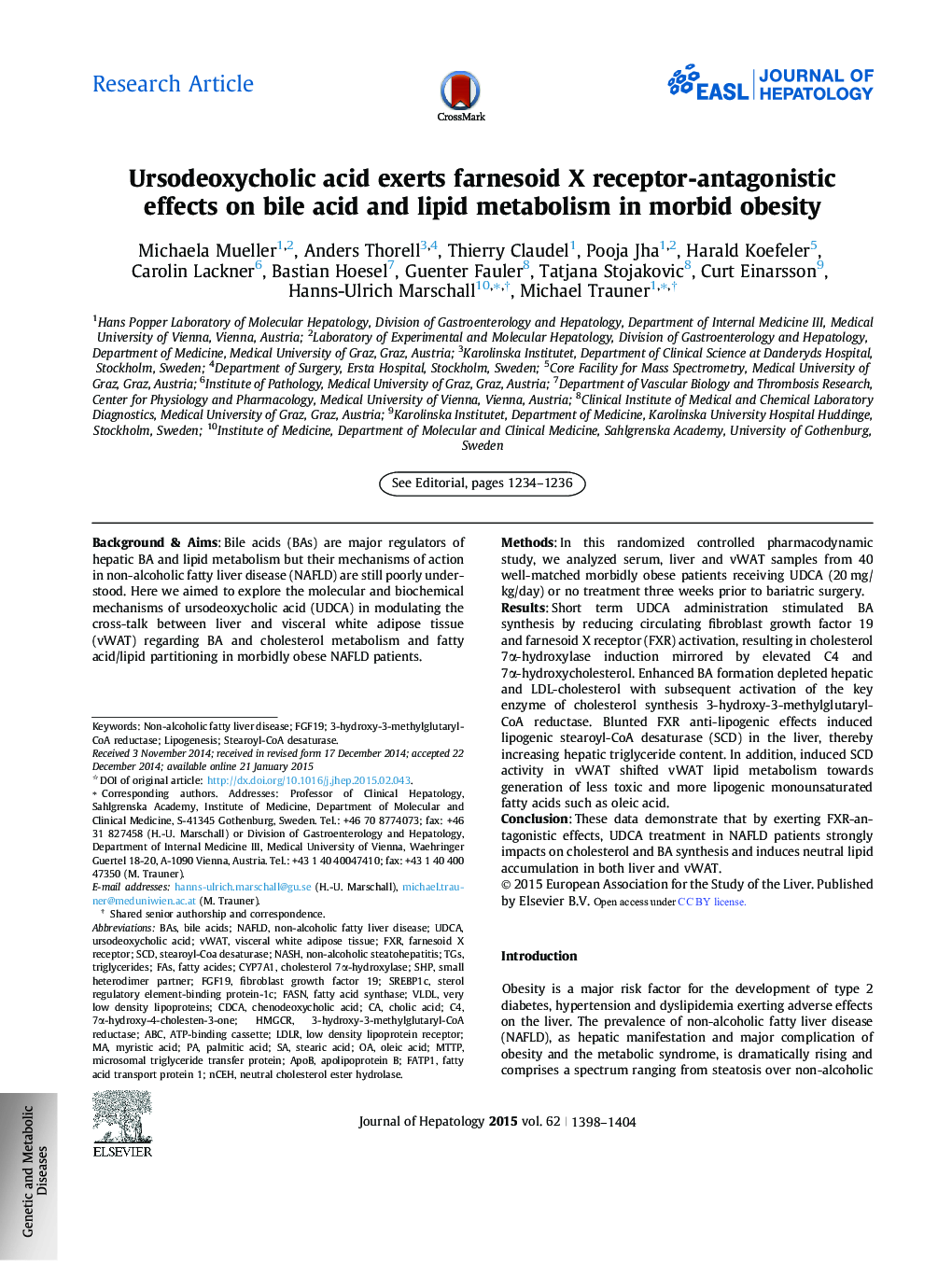| Article ID | Journal | Published Year | Pages | File Type |
|---|---|---|---|---|
| 6101960 | Journal of Hepatology | 2015 | 7 Pages |
Background & AimsBile acids (BAs) are major regulators of hepatic BA and lipid metabolism but their mechanisms of action in non-alcoholic fatty liver disease (NAFLD) are still poorly understood. Here we aimed to explore the molecular and biochemical mechanisms of ursodeoxycholic acid (UDCA) in modulating the cross-talk between liver and visceral white adipose tissue (vWAT) regarding BA and cholesterol metabolism and fatty acid/lipid partitioning in morbidly obese NAFLD patients.MethodsIn this randomized controlled pharmacodynamic study, we analyzed serum, liver and vWAT samples from 40 well-matched morbidly obese patients receiving UDCA (20 mg/kg/day) or no treatment three weeks prior to bariatric surgery.ResultsShort term UDCA administration stimulated BA synthesis by reducing circulating fibroblast growth factor 19 and farnesoid X receptor (FXR) activation, resulting in cholesterol 7α-hydroxylase induction mirrored by elevated C4 and 7α-hydroxycholesterol. Enhanced BA formation depleted hepatic and LDL-cholesterol with subsequent activation of the key enzyme of cholesterol synthesis 3-hydroxy-3-methylglutaryl-CoA reductase. Blunted FXR anti-lipogenic effects induced lipogenic stearoyl-CoA desaturase (SCD) in the liver, thereby increasing hepatic triglyceride content. In addition, induced SCD activity in vWAT shifted vWAT lipid metabolism towards generation of less toxic and more lipogenic monounsaturated fatty acids such as oleic acid.ConclusionThese data demonstrate that by exerting FXR-antagonistic effects, UDCA treatment in NAFLD patients strongly impacts on cholesterol and BA synthesis and induces neutral lipid accumulation in both liver and vWAT.
Graphical abstractDownload high-res image (153KB)Download full-size image
